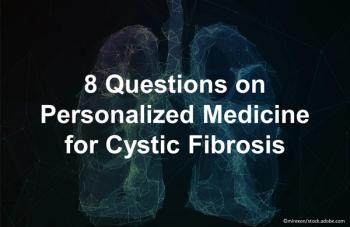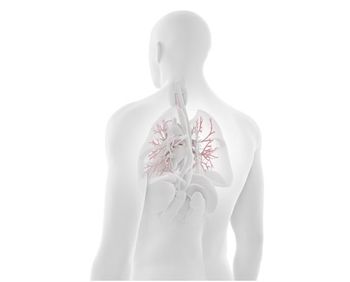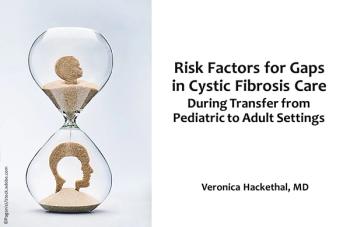
What Role for Digital Technology in Quality of Life for CF Patients?
Authors of a recent review of CF-specific care support technology advise that if the technology adds to treatment burden, it won't be effective.
From devices that help consumers track a wide variety of health indicators to those that allow healthcare providers to monitor disease progression, the digital technology options in healthcare have expanded rapidly.
Cystic fibrosis (CF) care has benefitted from the trend with digital technology now available to support such aspects as accessibility to healthcare, disease self-management, treatment adherence, and home-monitoring by healthcare professionals.
Some of these technologies, however, have been more successful in improving quality of life for patients with CF and their caregivers than others, according to
Rebecca J. Calthorpe, BMBS, MRCPCH, from the Evidence Based Child Health Group, Division of Child Health, Obstetrics & Gynaecology, at Queens Medical Centre, Nottingham, United Kingdom, and colleagues conducted a comprehensive systematic literature review to examine the evolution of CF-specific digital technologies over the past 2 decades and to determine their effectiveness in promoting home monitoring, treatment adherence, or self-management.
“We realized that technology is becoming more prominent both in healthcare as well as amongst the general population, and so we wanted to see what was already available and the evidence for it,” said Calthorpe of the motivations behind the review in an interview with Patient Care Online.
Researchers examined 59 articles and protocols relating to 48 studies from 1999-2019 with digital technology assessed for its role in:
• Home monitoring (ie, increasing accessibility to healthcare, early detection of exacerbations)
• Monitoring/promoting treatment adherence, exercise
• Education
• Self-management of treatment
Uneven results
When examining studies that evaluated videoconferencing between patients and providers to improve healthcare access, there were no significant differences found in respiratory function, but patient satisfaction increased. In one study, 63% of patients favorably compared a video provider visit to an in-person review.
Data for home monitoring of exacerbations, however, has been mixed, according to study authors. While smaller non-randomized studies showed a smaller decline in FEV1 status among telehealth patients using a remote digitally enhanced spirometry device, those results were not consistent with those of the subsequent large, multicenter, randomized controlled Early Intervention in Cystic Fibrosis Exacerbation (eICE) trial.2 eICE showed that while home monitoring resulted in early detection of exacerbations vs usual care, there was no significant difference in FEV1 decline between groups. The study was terminated early for futility.
“I think probably the technologies that don’t work very well [are] the ones that lead to additional treatment burdens for patients. The eICE trial demonstrated this quite nicely,” said Calthorpe. “Although this was looking at home monitoring, they asked patients to do home spirometry twice weekly and then upload the results which would be sent to the CF team. They had poor adherence to the protocol, and I think this was likely because of the increased treatment burden associated with this.”
Next: Home monitoring
Home monitoring for adherence
Several devices have been developed to aid CF patients and providers in assessing medication adherence but results from studies examining the devices are small in scope and access to some devices is currently restricted.
One study that compared self vs digital electronic adherence recording of high-frequency chest wall compression found, not surprisingly, high variability in self-reporting of treatment duration but more important, significant overestimation of duration – by 127% in adults and 26% by parents of children with CF. Overall average adherence of 69%.
Another study that examined the data-logging nebulizer device I-Neb® (Respironics; Chichester, UK) showed an adherence rate ranging between 60%-70% but was only available for patients taking Promixin® (not US FDA-approved).
The telehealth interface Insight Online-also developed by Respironics to work alongside I-Neb by uploading patient data to a server for providers to view-increased adherence for CF patients who used it, but >50% of participants did not regularly upload their data.
Studies that looked at use of video games and health trackers to improve fitness results showed the same conclusion: patients who used the intervention benefited, but the results were not sustainable long-term.
Among smaller studies examining self-management of CF, apps that provide patient-specific pancreatic enzyme replacement therapy dosing information were promising, but the results need to be confirmed in larger, randomized controlled trials, said Calthorpe.
“I would really encourage both those developing trials, as well as healthcare professionals who recommend technologies to their patients to consider treatment burden,” said Calthorpe. “I think technologies have the potential to be beneficial for patients and improve adherence, but only if they simplify care and don’t add any addition treatment demands to what already is a very time-consuming treatment plan.”
________________________________________________________
Stay in touch with Patient Care® Online:
→ Subscribe to our
References:
1. Calthorpe RJ, Smith S, Gathercole K, Smyth AR.
2. Lechtzin N, Mayer-Hamblett N, West NE, et al.
Newsletter
Enhance your clinical practice with the Patient Care newsletter, offering the latest evidence-based guidelines, diagnostic insights, and treatment strategies for primary care physicians.
















































































































































































































































































